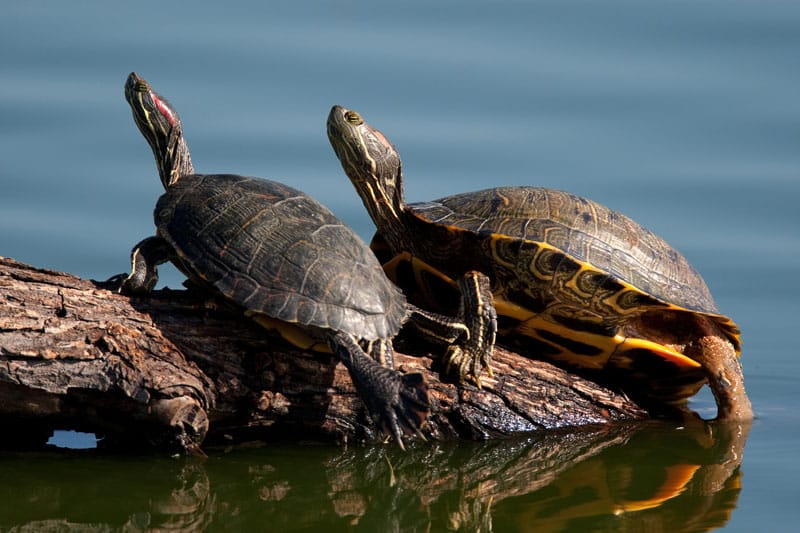Care sheet for the red-eared slider (Trachemys scripta elegans)
Red-Eared Slider (Trachemys scripta elegans)
The red-eared slider has a long history in the pet trade, and it has been kept for many years by a wide variety of hobbyists, both beginners and veterans. For years they were sold in dime stores, and unfortunately many died due to a lack of knowledge of the children who begged their parents to buy them for them. Luckily, now that reptile enthusiasts are better educated, the red-eared slider has a better chance of survival in captivity, but it is a large turtle and should be kept only by people who are prepared to provide the proper care for it.
Red-eared sliders are strong swimmers and will spend a majority of their time in the water. They bask a lot, too, and during warm, sunny days, wild red-ears love to stack on top of each other while doing so. The slightest movement or sound will send them sliding off their rocks or logs and back into the water—this, coupled with the red ear mark on both sides of their heads, gives them their common name. Pet red-eared sliders can be very personable and will often swim up to you, begging for food.
The native habitat of the red-eared slider is from New Mexico north to Ohio, Illinois, Indiana and West Virginia, then south through Kentucky, Tennessee and Georgia, all the way to northern Mexico. They are often found in slow-moving streams, creeks, lakes, ponds and marshes with a fresh and warm water supply.
Red-Eared Slider Availability
The red-eared slider is one of the most common turtles found for sale in pet stores across the U.S. and overseas. In addition to finding them at local pet stores, you can purchase them at reptile shows or online. It is illegal for hatchlings with a carapace length of less than 4 inches to be sold for anything other than educational purposes.
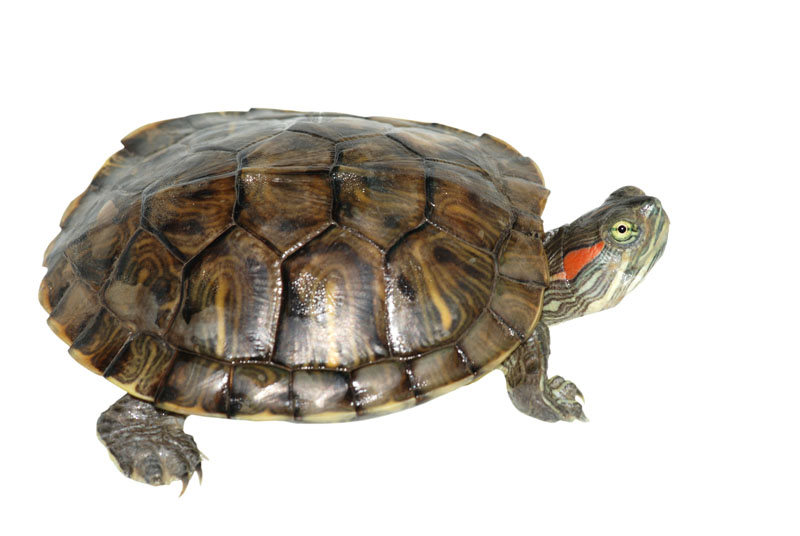
Pan Xunbin/Shutterstock
The red-eared slider is a large turtle that should be kept only by hobbyists who will be able to provide a large enclosure or pond.
Red-Eared Slider Size
Full grown adults can reach 12 inches in length, with females usually being the largest in size. There are rare instances of adult red-eared sliders growing larger than 12 inches.
Red-Eared Slider Life Span
Red-eared sliders can live a long life in captivity. When cared for correctly, they can easily live longer than 20 years.
Red-Eared Slider Diet
Red-eared sliders are omnivores. In the wild, they feed on aquatic vegetation, small fish and decaying material such as dead fish and frogs, etc. Pet red-eared sliders will feed on just about anything you give them, but I recommend feeding them a commercial turtle food or pellet to benefit proper growth and health. On occasion, you can offer them leafy greens, freeze-dried shrimp or krill, crickets, superworms, rosy red minnows and even pinky mice.
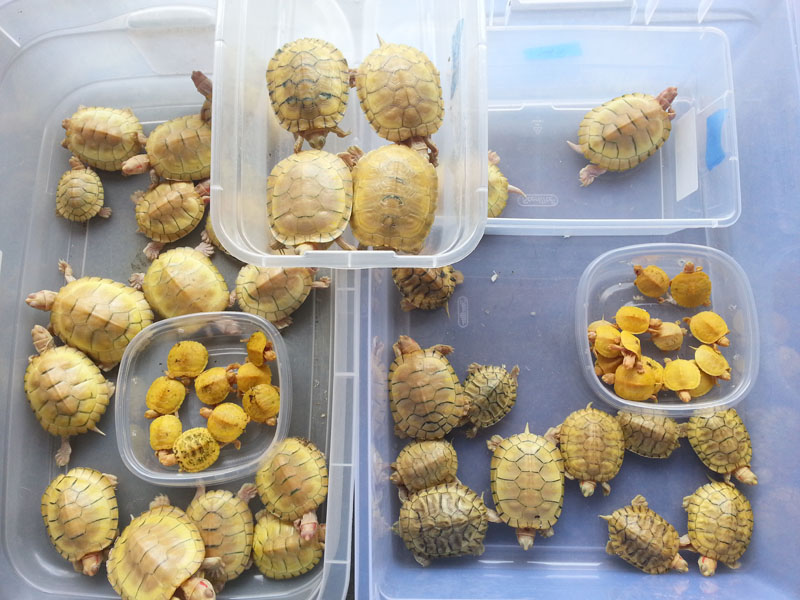
Vin Ma
Various types of red-eared slider morphs are being bred in captivity. These are all albinos of various ages and sizes.
Red-Eared Slider Housing
Hatchling red-eared sliders are very cute, but don’t let their small size fool you. Remember, adults can grow to 12 inches. The general rule of thumb for housing red-eared sliders is for every inch of shell length, you should provide 10 gallons of water. For example, a red-eared slider with a 5-inch shell length should be provided an enclosure containing 50 gallons of water to allow for adequate swimming space.
They can be kept in aquariums, turtle tubs, etc.
Primary accessories to properly house a red-eared slider are a water filtration system, a water heater, a basking dock and a basking lamp. Because red-eared sliders are messy feeders and produce a lot of waste, I recommend purchasing a water filter that is rated at least double the amount of water in your turtle’s enclosure. This reduces the frequency of water changes that will be necessary (though don’t neglect water changes; you should still perform them regularly) and maintains the cleanliness and health of your turtles.
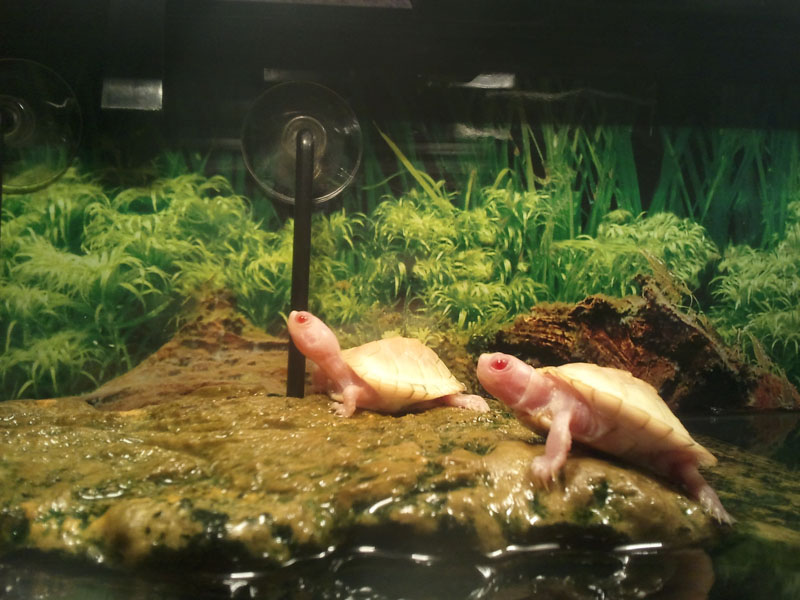
Vin Ma
These are hatchling “snow” red-eared sliders.
Use a submersible water heater to maintain the ideal water temperature between 75 and 85 degrees Fahrenheit. Turtles can be rough, so use a water heater guard to protect the heater from breaking; they are available in pet stores or online. Be sure to maintain the recommended temperatures, both in the water and the ambient temperatures mentioned below. If the temperatures are too cold, your turtle’s metabolism will reduce, which can be a threat to its health. Keep tanks and tubs away from areas with cool breezes or drafts, too, as constant fluctuation of temperatures due to these can cause respiratory infections.
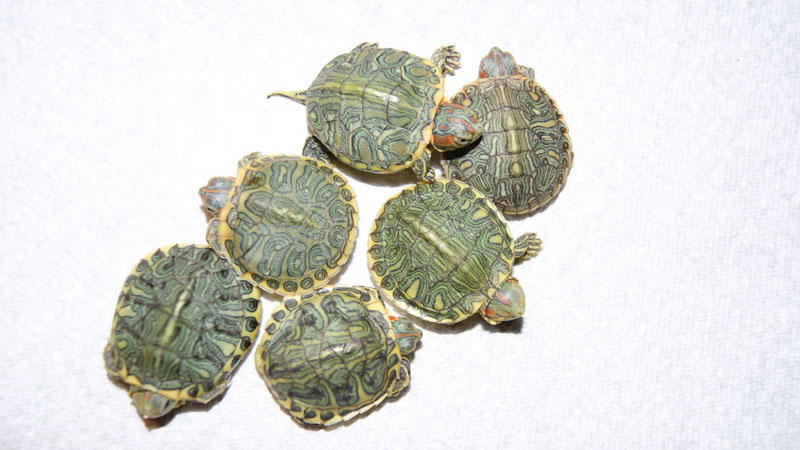
Vin Ma
Pastel red-eared slider hatchlings.
To ensure proper health and growth of red-eared sliders, a basking light that provides UVB and UVA rays, to mimic the sun, is required. Purchase either a commercial turtle basking dock or create your own basking platform onto which your turtle can emerge from the water to soak up the artificial sunlight and dry off. Temperatures in the basking area should remain between 85 and 90 degrees.
Red-Eared Slider Handling and Temperament
Captive-born-and-raised red-eared sliders are more personable compared to wild red-eared sliders, which tend to be more cautious and frightened when approached by humans. At the slightest sound or movement, they will quickly slide into the water for cover. Captive-bred red-eared sliders are the opposite; they will frequently swim up to you and beg for food.
Although every turtle is different, when handled, red-eared sliders could withdraw into their shells or possibly even nip at your fingers if they feel threatened. This is why it’s not recommended that you frequently handle your red-eared sliders or remove them from their habitats.
Vin Ma has been working with various species of turtles since 2002, and since 2006 has been working on selective color breeding, focusing on color morphs such as albino and caramel red-eared sliders. Visit his website at www.turtlemorphs.com.

